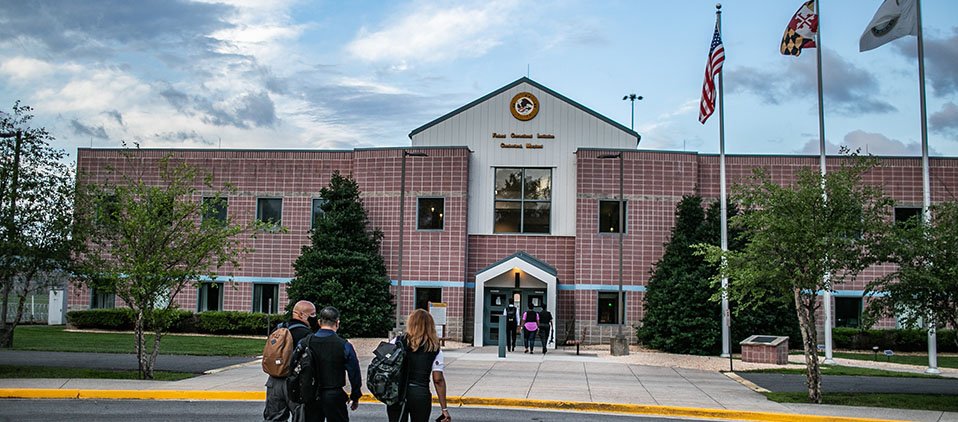Federal Bureau of Prisons: Insights into the U.S. Correctional System
Explore the role and functions of the Federal Bureau of Prisons in the U.S. correctional system. Learn about its responsibilities, facilities, and inmate management. Discover how the federal prison system contributes to the country’s criminal justice system.
Introduction
The Federal Bureau of Prisons (BOP) plays a crucial role in the United States correctional system, overseeing the custody and care of federal inmates. Established with the objective of ensuring public safety and rehabilitation, the BOP manages a network of correctional facilities across the nation. This article delves into the various aspects of the Federal Bureau of Prisons, shedding light on its functions, facilities, inmate management, and overall significance.
Federal Bureau of Prisons: Navigating the Correctional Landscape
The Federal Bureau of Prisons, commonly referred to as the BOP, is a federal agency under the United States Department of Justice. It operates as the primary agency responsible for the management of federal correctional facilities, including prisons and detention centers.
The Role of the Federal Bureau of Prisons
The BOP is entrusted with multiple responsibilities, including the safekeeping, care, and rehabilitation of federal inmates. It aims to maintain secure and humane correctional environments that foster inmate rehabilitation and reintegration into society upon release.
 BOP Facilities and Security Levels
BOP Facilities and Security Levels
The BOP oversees a diverse range of facilities, each designed to accommodate different security levels of inmates. These facilities include high-security penitentiaries, medium-security institutions, low-security facilities, and detention centers for pretrial detainees. The classification of inmates is based on factors such as the severity of the offense and the potential risk posed by the inmate.
Inmate Management and Programs
The BOP emphasizes inmate programs that focus on education, vocational training, substance abuse treatment, and mental health services. These programs aim to equip inmates with the skills and support needed to lead productive lives after their release. The BOP also implements measures to address recidivism and promote successful reentry into society.
Understanding BOP’s Contribution to the Criminal Justice System
The Federal Bureau of Prisons plays a pivotal role within the broader context of the U.S. criminal justice system, impacting both individual lives and societal safety.
Contributions to Public Safety
By securely confining individuals convicted of federal offenses, the BOP contributes to safeguarding communities from potential harm. The agency’s commitment to maintaining secure facilities helps prevent escapes and ensures that dangerous criminals are not a threat to society during their incarceration.
Rehabilitation and Reentry
While incarceration is a form of punishment, the BOP also recognizes the importance of rehabilitation. Through educational and vocational programs, inmates can develop skills that enhance their employability upon release. This focus on rehabilitation ultimately reduces the likelihood of reoffending and helps individuals become productive members of society.
Collaboration with Other Agencies
The BOP collaborates with various federal, state, and local agencies to ensure seamless transitions for inmates moving between different correctional facilities or facing legal proceedings. This cooperation is essential for maintaining the integrity of the criminal justice system as a whole.
FAQs about the Federal Bureau of Prisons
Q: How many federal inmates does the BOP currently house? A: As of the latest data, the BOP is responsible for the custody and care of approximately 150,000 federal inmates.
Q: What measures does the BOP take to ensure inmate safety? A: The BOP employs a range of security protocols, including regular inmate assessments, classification, and monitoring, to maintain a secure environment within its facilities.
Q: Are inmates provided with healthcare services? A: Yes, the BOP is mandated to provide necessary medical and mental health care to inmates, ensuring their overall well-being.
Q: Does the BOP offer programs for inmate education? A: Absolutely, the BOP offers various educational programs, including GED preparation, vocational training, and post-secondary courses, to help inmates acquire new skills.
Q: How does the BOP support inmates’ reentry into society? A: The BOP offers programs that assist inmates in preparing for reentry, such as job readiness training and substance abuse treatment, to increase their chances of successful reintegration.
Q: Can family and friends visit federal inmates? A: Yes, the BOP permits approved visitors to maintain connections with federal inmates through scheduled visitation.
Conclusion
The Federal Bureau of Prisons plays a vital role in the U.S. correctional system, ensuring the safety of communities while promoting rehabilitation and reentry for inmates. By managing various types of correctional facilities and implementing diverse programs, the BOP contributes significantly to the overall functioning of the criminal justice system. As society continues to evolve, the BOP remains committed to its mission of maintaining secure and humane correctional environments that facilitate inmate rehabilitation and successful reintegration.
















